Merging Concert and Choreography: Ben Folds with Nashville Ballet

 and vitality that is graceful, visceral, and everything in between.
and vitality that is graceful, visceral, and everything in between.
The flagship piece of the production is The Ben Folds Project: Concerto, a concerto for piano and orchestra composed by Folds with choreography by Paul Vasterling, Artistic Director for Nashville Ballet. Folds’s Concerto for Piano and Orchestra was composed both as a concert piece to be heard in symphony halls and as an intended collaboration with Nashville Ballet. Performed with the piano onstage, it is a treat for any audience member to watch the piece masterfully played by the composer himself. Vasterling’s choreography beautifully highlights all the elements of the work that make its second original intent as a ballet so clear; elements that can be so easily overlooked in a concert setting. The work’s third movement features Nashville Ballet company members Mollie Sansone, Lily Saito, Brett Sjoblom, and Luca Sportelli, who offer a performance that perfectly highlights the rhythmic intensity and drive of Folds’s music. This production is the first time since its premier in 2014 that Folds and Nashville Ballet have performed the Concerto in its intended collaborative setting.
The most intimate moments can be seen in the two middle pieces, Bloom Pas De Deux and Duo Concertant. Bloom Pas De Deux features the music of Philip Glass’s Violin Concert No. 1, played beautifully by the Nashville Symphony Orchestra and choreographed by Annabelle Lopez Ochoa. It is the Belgian-Columbian choreographers reflection on devotion rituals she observed in Bali, Indonesia. The motion that ebbs between delicate and powerful was given brilliant life by Kayla Rowser and Benjamin Wetzel. Duo Concertant features choreography by George Balanchine and music of the same name by Igor Stravinsky; a duet for piano and violin exquisitely played by pianist Alessandra Volpi and violinist Christina McGann. Both musicians were positioned onstage with company members Jamie Kopit and Michael Burfield; whose dancing delivered incredible poise and intensity and perfectly reflected the playing of the musicians on stage with them.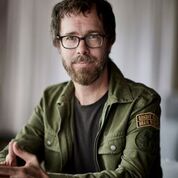
The production rounded off with The Lottery, a narrative work based on the short story of the same name by Shirley Jackson with choreography by Val Caniparoli and music by Robert Moran. Permeated by the unease and violence that motivates Jackson’s short story, Moran’s score is filled with twists and turns that unsettle; often resembling a distinctly American version of Stravinsky’s Rite of Spring. This unsteady musical environment was, yet again, delivered in full by the Nashville Symphony Orchestra. Val Caniparoli’s choreographic setting of Jackson’s original story takes the intensity even further. The imagery presented maintains constant mounting tension, which the cast embodies with an observable passion and completeness. The work features a live lottery at the climax of the piece, at which cast members participate in the same style of drawing the characters in Jackson’s story do as part of their annual ritual.The cast member at the center of the finale of the piece is randomly selected; never knowing with certainty who will be the sacrifice in each individual performance. After a full program of verbal silence, a shouted, “It’s not fair!” became particularly arresting, and certainly provided a standout moment in the production.
 Above all, Ben Folds with Nashville Ballet created a unique environment that can be quite rare in performance. It created a space of complete harmony between music and dance; where the two elements could be appreciated in full as one entity and neither vied for dominance over the other. Instrumental soloists were just as visible as the dancers for which they played. Music and choreography both seemed to be produced from a place that is as much source as it is response. Three out of the four programmed pieces were composed with the full intention of their performance in a concert hall without any staging at all, but were choreographed and performed with such a high degree of care and finesse that one almost could not imagine them without their choreography. In the same way, the one programmed piece that was composed exclusively with choreography in mind would hold wonderfully in a concert hall, stripped of its visual elements. The effect is one of actual awe where the audience can feel every caress and every impact in full, with absolute clarity.
Above all, Ben Folds with Nashville Ballet created a unique environment that can be quite rare in performance. It created a space of complete harmony between music and dance; where the two elements could be appreciated in full as one entity and neither vied for dominance over the other. Instrumental soloists were just as visible as the dancers for which they played. Music and choreography both seemed to be produced from a place that is as much source as it is response. Three out of the four programmed pieces were composed with the full intention of their performance in a concert hall without any staging at all, but were choreographed and performed with such a high degree of care and finesse that one almost could not imagine them without their choreography. In the same way, the one programmed piece that was composed exclusively with choreography in mind would hold wonderfully in a concert hall, stripped of its visual elements. The effect is one of actual awe where the audience can feel every caress and every impact in full, with absolute clarity.
Ben Folds with Nashville Ballet can still be seen in TPAC’s Jackson Hall on April 27, 2019 at 7:30 PM and April 28, 2019 at 2:00 PM. Tickets are available at www.nashvilleballet.com.
Don Aliquo Presents “Tribute to Stan Getz” at the Frist

A temperate spring day drew Nashville locals and tourists to mill about downtown, filling the streets with party buses, pedal taverns, strolling pedestrians, and others riding motorized scooters. As always, the Frist Art Museum was a popular destination for the public who were entreated to another installment of the Nashville Jazz Workshop’s Jazz on the Move series on April 14.
The presentation, titled “Tribute to Stan Getz” was led by saxophonist Don Aliquo who is Professor of Saxophone and Jazz Studies at Middle Tennessee State

University. This was the final installment of the series for 2019, and it featured pianist Lori Mechem, bassist Roger Spencer, drummer Duffy Jackson, guitarist Mel Deal, and saxophonists Denis Solee, Kyle Etges, and Zach Tyler in the ensemble through various configurations. The group performed selections from tenor saxophonist Stan Getz’ wide and varied repertoire spanning from the late 1940s to the mid-1980s. As with other presentations in the Jazz on the Move series, the auditorium at the Frist Art Museum was fully attended with every seat filled.
The presentation opened with welcoming remarks from Ellen Pryor, Director of Communications at the Frist and Eric Dilts, Executive Director of the Nashville Jazz Workshop. After the welcoming remarks were concluded, the group launched into a swinging rendition of “Four Brothers,” a Jimmy Giuffre tune recorded by the second Woody Herman “Herd” big band that first exposed Getz’ playing to a wider audience. Incidentally, the second “Herd” was also known as the “Four Brothers Band” due to the popularity of Giuffre’s composition. This tune featured all four saxophonists playing a harmonized melody, often referred to as a “sax soli” feature. The unique aspect of this piece, which was an essential characteristic of Herman’s “Four Brothers Band” was the instrumentation of the saxophone section: three tenors and one baritone saxophone as opposed to the standard instrumentation of two altos, two tenors, and one baritone. The tenors, comprised of Aliquo, Solee, and Tyler with Etges on baritone played with striking precision on the complex melody of the song characterized by the bebop stylings that had emerged in the 1940s when the song was first recorded.
During the improvisations, each saxophonist played with a style reminiscent of Getz’
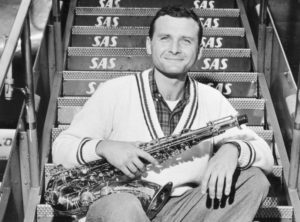
sound during this period, which was largely modeled after acclaimed saxophonist Lester Young. The overall sound was characterized by smooth phrasing that remained adherent to the pocket provided by the rhythm section.
Speaking of the rhythm section, Mechem, Deal, Spencer, and Jackson supported the wind players superbly with a finely-tuned balance of musical interjection and accompaniment. This resulted in troves of compelling textures, timbres, and atmosphere when combined with the wind players. Jackson proved to be the fieriest of the group, alternating steady swing and Latin grooves with plenty of comping to spare. Each rhythm section member took thoughtful, tasteful, and compelling solos that showcased their depth of knowledge through years of experience of being in-demand jazz musicians in both Nashville and beyond.
After “Four Brothers,” Etges and Tyler exited the stage and the rest of the group moved through the next selections with Aliquo and Solee taking turns on various melodies of the tunes that followed. These selections included a mixture of ballads like “Early Autumn” and “Moonlight in Vermont” (featuring a chord melody introduction by Deal) with up-tempo bebop tunes like “Motion” (a contrafact of “You Stepped Out of a Dream”) before moving into the Latin staples of Getz’ career. These Latin selections included “Desfinado,” “The Girl from Ipanema,” and the bebop/Latin hybrid “Con Alma.” The final selection performed was “Voyage,” an up-tempo tune written by pianist Kenny Barron that appeared on Getz’ album of the same name in the mid-1980s. Both Aliquo and Solee played stylistically true to Getz’ sound while maintaining their own musical identity throughout their phrases, often carrying musical conversations on both the original melodies and improvised solos.
The presentation given by Aliquo and his supporting group largely featured playing the musical selections interspersed with minimal remarks by the artists on Sunday afternoon. It was an effective approach to let the presentation unfold primarily through the music rather than the use of anecdotes. Aliquo provided concise, meaningful information in the spoken parts, and he kept the audience entertained with humor and interactive questions, asking for the audience to describe aspects of Getz’ trademark sound at one point during the presentation.
Readers are encouraged to check out upcoming events at the Nashville Jazz Workshop at their website www.nashvillejazz.org and Aliquo’s upcoming projects via www.donaliquo.com.
At the Schermerhorn and then Rudy’s: A Saturday Night Out in Music City
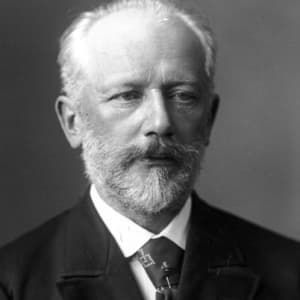
On April 13, on a day where the rain just wouldn’t seem to stop, the Nashville Symphony presented a concert which featured Pyotr Ilyich Tchaikovsky’s epic Fourth Symphony “Fate” Opus 36 as well as two pieces by Maryland-born composer Christopher Rouse-Supplica and his Concerto for Orchestra. The Rouse pieces were recorded for a forthcoming release by the Nashville Symphony.
The evening opened with Rouse’s Supplica. Written in 2013, it is a single movement lyrical work which seeks to convey the “intensity of a prayerful plea.” The work is programmatic (and sounds like it), but conveys a meaning for the composer which he states “must remain personal.” In that way, and in the way that Rouse creates a world within the movement, Supplica is written in a remarkably Mahlerian language. Although the orchestra is pared down to horns, brass, harp and strings (lacking woodwinds in particular) it is remarkably lyric with explosive moments of dissonance. Here Nashville’s string section were brought into the highlight and they didn’t disappoint, expressing Rouse’s visceral longing with an eloquent and sensitive phrasing.
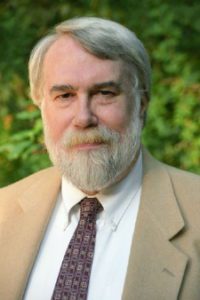
But if Supplica represented a kind of etude on musical virtuosity, Rouse’s Concerto for Orchestra brought the technical virtuosity of the entire band to the forefront. This piece is constructed in two halves, with the first filling a kind of “ababa” form that balances great and explosive rhythmic sections with intimate, emotional interludes. The second half is related, but in two parts leading to what Rouse called a “frenzied, almost hysterical, climax.” Certainly, the piece put the orchestra through their paces and what emerged was a fantastic rendition of an extraordinarily difficult piece. To mention any one section by name would be ludicrous, each instrumental section was tested in its own way. In all I anxiously await the recording, not only to document the performance, but also to demonstrate what a superior band we have here in Music City. It was quite nice to see the composer take to the stage and accept his applause. Rouse offered a remarkable thanks Maestro Guerrero in an interview before the concert (located on youtube) in which he remarked on the role and impact that the Symphony has had in championing living American composers;
Speaking for many composers, we are so grateful to you and this terrific orchestra, for having the commitment, not just to perform the music but to record it as well so that it is disseminated beyond just the live concert hall experience. It’s something that we have enormous gratitude for.
After intermission the orchestra returned to the 19th century with Tchaikovsky’s Fourth Symphony. Written just after his brief and tragic marriage, Tchaikovsky dedicated it to his patroness, Nadezhda von Meck, who he saw as an artistic inspiration for the work, and to whom he gave an extensive description of its program. The symphony opens with a great fanfare for horns, played with brilliance in Nashville. The fanfare returns as a kind of structural articulation that represents, in the composer’s words, “Fate, the fatal power that hinders one in the pursuit of happiness from gaining the goal, which jealously provides that peace and comfort do not prevail, [….] This might is overpowering and invincible. There is nothing to do but to submit and vainly complain.” Indeed, the entire movement proceeds along these lines with a great contrast between hopeful lyrical moments and this crushing fanfare.
Guerrero brought the contrasts out sharply. Special mention goes to the Principle Oboist Titus Underwood for the melody that marks this dreamlike second movement. The third movement is a Scherzo that seems to pay tribute to Mendelsohn; it is a tour-de-force of light fast moving string pizzicato reminiscent of Mendelssohn’s fairy music, played with remarkable precision by Concertmaster Jun Iwasaki and the rest of the strings. The work then proceeded, despite a return of the “fateful fanfare,” to an exciting conclusion that brought the room to its feet. Overall the concert was a beautiful but heavy, emotional evening, and upon leaving, I decided to stop off at Rudy’s Jazz Room to catch some jazz before heading home.
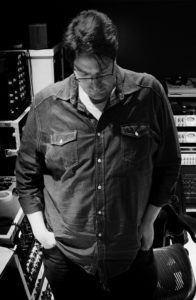 I arrived at Rudy’s just in time to catch the back end of the Jody Nardone trio’s set. Nardone is a fine pianist and tremendous vocalist. The ensemble covered Soundgarden’s Black Hole Sun, with an innovative approach that seemed to replace the grunge rock anthem’s volume and distortion with advanced harmonies and introspection. A fusion that made the song anew even as it carried the same expressive goals with gripping precision. After the set, Nardone gave me a copy of his 2013 release Lights Will Guide You Home whose title he took from the opening ballad “Fix You” by popular rock artist Coldplay. It is littered with these beautiful covers of deep tracks in popular music.
I arrived at Rudy’s just in time to catch the back end of the Jody Nardone trio’s set. Nardone is a fine pianist and tremendous vocalist. The ensemble covered Soundgarden’s Black Hole Sun, with an innovative approach that seemed to replace the grunge rock anthem’s volume and distortion with advanced harmonies and introspection. A fusion that made the song anew even as it carried the same expressive goals with gripping precision. After the set, Nardone gave me a copy of his 2013 release Lights Will Guide You Home whose title he took from the opening ballad “Fix You” by popular rock artist Coldplay. It is littered with these beautiful covers of deep tracks in popular music.
At 11:30 the Geoff Pfeifer Quartet came onstage and performed a harder Jazz, opening with
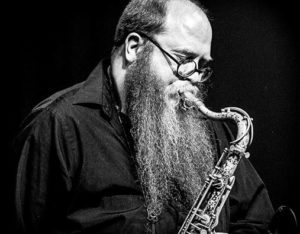
Wayne Shorter’s “Fee Fi Fo Fum” and then “Stella by Starlight,” with a brisk fluency that was refreshing and quite exciting–a New York, even Bebop-informed, jazz in Music City. In a night of stark contrasts I shouldn’t have expected anything more. Unfortunately, life had plans for me early the next morning so I had to depart ‘round midnight. So much music here in the city, so little time.
Nashville Opera’s Tales of Hoffmann Dazzles and Delights
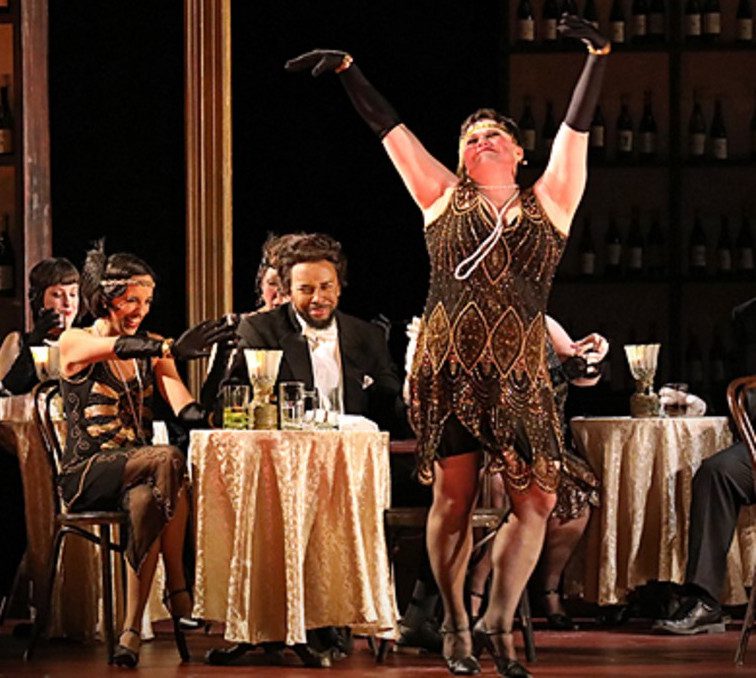
A group of drunken students, a muse disguised as a man, and a love-torn poet walk into a bar.
Thus begins the Nashville Opera’s company premiere of Tales of Hoffmann, a fantastical story of a slightly inebriated poet named Hoffmann (Noah Stewart) who endures three lost loves before recognizing that his love is, in fact, his art.

The original, nearly four-hour long opera was scaled back to almost three hours in Artistic Director John Hoome’s skillfully crafted production that transforms a light-hearted, opéra comique into a story with depth and impressionable characters. Coupled with some of opera’s finest voices, with only minuscule shortcomings, Tales of Hoffmann delights and transports the audience to a modern-day fairy tale.
The work is separated into three distinct acts, named after Hoffmann’s three past lovers: Olympia, a mechanical doll Hoffmann mistakes for a real person, Antonia, a beautiful young woman suffering from a potentially fatal illness, and Giulietta, a glamorous Venetian courtesan. Nicklausse (Sara Crigger), Hoffmann’s artistic muse disguised as a man, is along for the ride, saving him from all his love-sick antics.
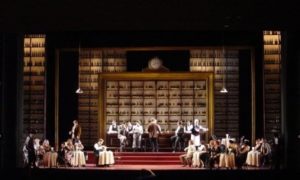
Crigger’s progression as a character and rich mezzo-soprano voice serve as a focal point of the story, all while poking fun of Hoffmann’s grief and taunting him with past songs of his long-lost lovers. Almost as if they are chums in real-life, the chemistry between both characters is notable and an important facet for the over-arching story.
While some opera companies choose to divide all three of Hoffmann’s lovers between one singer or have different singers for all three, Nashville chose another noteworthy route. By casting Antonia and Giulietta (Inna Dukach) as the same singer, this gave Olympia (Chelsea Friedlander) a stand-alone role in which Friedlander truly shines.
Similarly, the four villains named Lindorf, Coppélius, Miracle, and Dapertutto were performed by the same bass-baritone (Zachary James), because they are all manifestations of evil that lurk and seemingly play a hand in failing each of Hoffmann’s love-interests.
While the division at first sounds like it would diminish the role of these lovers in relation to Hoffmann – it does quite the opposite. Olympia’s role calls for a dramatic, coloratura voice that Friedlander so skillfully shows off in one of the opera’s most famous arias “Les oiseaux dans la charmille” (“The birds in the arbor”, nicknamed “The Doll Song”).

Friedlander offered a performance combining extraordinary agility, accurate intonation, and pinpoint staccatos. Despite minor weaknesses with the trills and stratospheric upper register, such shortcomings are overshadowed by her tricky role consisting of jerky automaton-inspired movements contrasting with her sprightly cadenzas. Friedlander chimed through her character’s prominent doll aria, earning well-earned laughter from the audience as she pretended to undergo a mechanical malfunction.
Set against a dreamlike “Alice in Wonderland” like backdrop, featuring mad-scientists and disembodied eyes, the first act was outlandish and an eye-catcher. A feature of Hoome’s version of Hoffmann, however, is that the fairy tale playfulness of the opera doesn’t end with Olympia.
While critics label the second act as being the weaker part of the opera, Nashville’s production seemingly breaks that mold. Dukach as Antonia absolutely dazzles the audience with her nuanced attention to dynamics which kept the drama feeling genuine rather than phony, employing gentle pianissimo high notes to convey Antonia’s mournful yearning for her mother.
Perhaps the most emotionally riveting moments of the production come from this act, where Dukach and Stewart skillfully showcase the chemistry that two well-seasoned performers can bring to the stage. Take for example “C’est une chanson d’amour” (“It’s a love song”), where Dukach twirls through her swirling lyrics and Stewart transcends to a character hopelessly in love with the lady before him.
Paired with a spicy performance by James as Dr. Miracle, the act’s Nemesis, and the lyrical and flexible voice of Rafael Porto as Crespel, Antonia’s father, this act was a stirring and well-produced bridge into the opera’s final scenes.
The drama in the plot only gets stronger in the third act, when Hoffmann falls for the devious Venetian
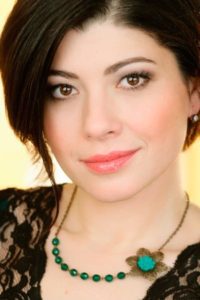
courtesan Giulietta. Once again, Dukach displays her liveliness as a performer by switching roles to a devious woman that tricks Hoffmann into thinking she loves him.
The act opens with the barcarolle “Belle nuit, ô nuit d’amour” (“Beautiful night, oh night of love”). A dreamy song that showcases not only one of the most famous barcarolles ever written but also features the production’s heavily marketed gondolas which stroll through the production’s impressive set. Throughout, Dukach didn’t press too hard to overdo her role as a seductress, and her gestures of coyness served her well in firing up the chemistry between her and Stewart.
Zachary James, having one of the strongest voices of the production, also acted with an amazing set of hand gestures balanced by the slightly cringe-worthy bowing of a larger-than-life violin in the second act.
Nevertheless, the audience later shares in Hoffmann’s respite when Crigger’s character finally revealed she was a Muse – a goddess of artistic inspiration – and thus Hoffmann’s unwavering love. The grandiose unveiling felt gratifying and well-earned after following the growing friendship between Nicklausse and Hoffmann.
With the performers’ lively singing and commitment to their characters, Nashville Opera’s Tales of Hoffmann gleams as a prevailing fairy tale and perceptive metaphor of overcoming even the worst of heartbreaks.
Oracle Blue Brings Swank Pop to Rudy’s
Inclement weather did not stop the turnout to Rudy’s Jazz Room Saturday night, March 30 to see regional favorites Oracle Blue perform their own brand of neo-soul. Combining original songs with covers of R&B and pop tunes, the band led the audience through soulful grooves peppered with bebop-rooted improvisations and effects-driven timbres.
Hailing from Myrtle Beach, South Carolina, Oracle Blue was formed in Fall 2013 as a student jazz combo at Coastal Carolina University. The band members include vocalist Liz Kelley, bassist McKinley Devilbiss, drummer Wade McMillan, and multi-instrumentalists Zach Douglas and J.P. Taylor who switched between various keyboards, brass, and woodwind instruments.
The band garnered accolades in 2017 with a Downbeat magazine award which led to invitations to perform at the Montreux, Umbria, and Vienne Jazz Festivals. Since then, Oracle Blue have remained active in the Southeast and Midsouth regions of the United States, bringing what they call “swank pop” to audiences. “We want our music to be all-inclusive,” states Kelley, “It’s a term we came up with to communicate our goal of making music that is relatable to our audiences.” The term describes a sound that utilizes pop songwriting combined with rhythmic grooves and melodic improvisations anchored in jazz traditions from the middle-Twentieth century in pursuit of a goal of creating music engaging to audiences while also challenging conventional norms of harmonic, melodic, and rhythmic vocabulary.
Those relatable musical selections range anywhere from pop tunes such as Stevie Wonder’s “I Can’t Help It” to Freddie Hubbard’s “Red Clay” and songs by other artists such as Hiatus Kaiyote and Mary J. Blige. The band’s original compositions reflect a pop sensibility rooted around looping vamps that allow each band member to explore harmonic, rhythmic, and melodic expressions that addresses their jazz roots. Kelley showcased her command of melodic variations on the melodies of each tune while Douglas and Taylor explored postbop improvisational language in various selections. The rhythm section was held down by Devilbiss and McMillan, who each traversed melodic and rhythmic devices addressing various styles within funk, swing, and Latin styles.
In terms of timbre, the band relied heavily on synthesizers for effects on the various wind instruments in addition to vocal melodies sung by Kelley and Taylor. Both Taylor and Douglas showcased affinities for keyboard accompaniment figures characterized by thick block chords that planed through chromatic substitutions which affected unique harmonic colors in the overall sound when combined with the steady bass figures from Devilbiss and the rhythmic explorations from McMillan.
Overall, the group played each selection with an approach that while consistent, also proved to be somewhat unvaried in terms of groove and overall sound. Most of the selections were centered around repeated 16th-note oriented grooves and thick accompaniment pads. The deviations from this approach were a welcomed contrast, reflecting a growing musical maturity in the band while they seek to define and cement their sound. Though somewhat indiscernible from the present fare of current neo-soul/R&B groups, Oracle Blue shows promise of finding a sound that is accessible yet wholly unique as they refine their material in both the studio and on the road.
The Silkroad Ensemble Makes a Stop in Music City
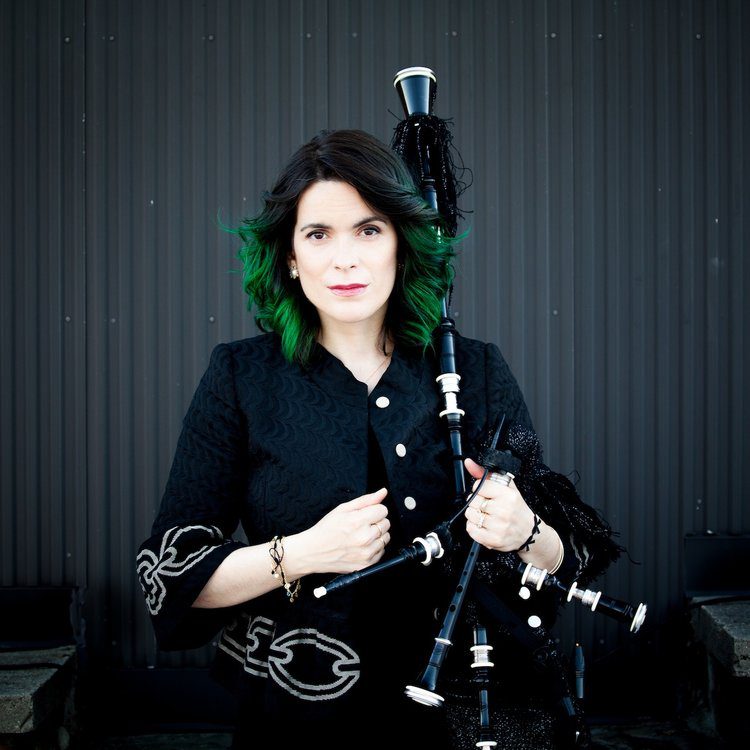
MCR: It has been over 20 years since Yo-Yo Ma conceived of the Silkroad Ensemble as “…a model for productive cultural collaboration, for the exchange of ideas and tradition alongside commerce and innovation.” How have the goals and approaches changed since Ma’s original vision?
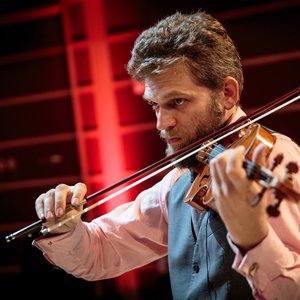
JG: When the group was founded 20 years ago, we pursued the mission by trying to answer one question: what happens when strangers meet? There was a lot of trial and error back then. There was definitely fear of the unknown, of making mistakes, with the occasional impostor syndrome thrown in. But there was also curiosity about each other and the musical traditions that were represented by each member of the Ensemble, as well as deep mutual respect. With each tour, the sense of trust grew within the band, to the point where when engaging in the unfamiliar, we could simply be ourselves, and know that we got each other’s back. The joy of discovery and friendship is palpable, both for us and the audiences. A
Having spent almost 2 decades playing and traveling together, learning about one another and visiting each others homes, we are no longer strangers, we are family. We’ve seen each other grow up, immigrate, start families, have kids. We’ve seen each other’s hair turn grey.
Of course there are still highs and lows, and many more lessons to learn, but we go through them as one. The ensemble has built a shared history, one that every musician in the group has contributed to, and the collective experience and knowledge of the band is our most valuable currency.
MCR: How did Nashville come to have a stop on the Silkroad?
JG: We are currently on tour in the Southeast, having stops in North Carolina and Georgia, before
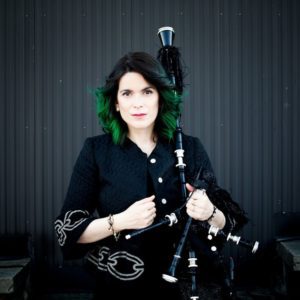
heading to Nashville. We’ve played at Schermerhorn Center once before – it’s one of the great halls in the country! It’s definitely one of the places we are most excited about playing at during this tour.
MCR: What is the make up of the ensemble that is visiting Nashville?
JG: This is an unusually small group, with only 7 musicians. Shawn Conley (bass), Sandeep Das (tabla), Haruka Fujii (percussion), Joe Gramley (percussion), Cristina Pato (gaita, piano) and myself have been playing with the group for a very long time. We are very excited to have Nora Fischer join us on this tour. Nora is an incredible singer, who combines deep knowledge of the Western Classical tradition, with a beautiful affinity for folk singing traditions from around the world. She is a perfect fit for Silkroad Ensemble – I can’t wait for you to hear her!
MCR: What should audiences look for in your concert?
JG: This particular program features a diverse array of global traditions, with music from Galicia,
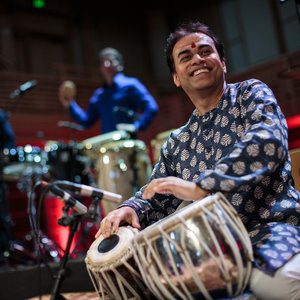
Ghana, India, Japan, Lebanon, Moravia, Peru, Spain and Syria. There will also be music by Henry Purcell, Maurice Ravel and John Zorn. It’s a fun musical trip around the world, and you don’t even need to bro g your passport, just your ears and an open mind!
MCR: What impact, ideally, would you have on music city?
JG: I think it’s more likely that Music City will have an impact on us! So many musical heroes and dear friends of ours live in Nashville! Bela Fleck and Abby Washburn, Connie Heard and Edgar Meyer, Wu Fei, Chris Eldridge and Kristen Andreassen, Brittany Haas, Paul Kowert -p the list goes on. I’m hoping to give a concert worthy of a city so many musical giants call their home.
MCR: Do you plan to hear any local music while you are in town?
JG: Absolutely! Our first free night on tour is Sunday – I will be at the Local, can’t wait to hear Chris Scruggs; on Monday night, my plan after our show is to run to the American Legion Hall to catch Billy Contreras’ set. Maybe catch the Time Jumpers if there is time?
The Nashville Symphony Presents Spanish Nights
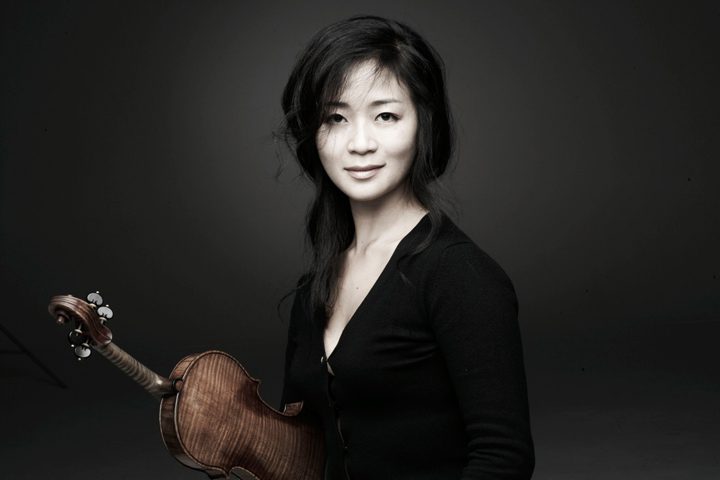
On Saturday, March 23, the Nashville Symphony gave a performance entitled Spanish Nights, featuring guest conductor Miguel Harth-Bedoya. The concert was comprised of four pieces from composers of varied nationalities, but a common Spanish influence, opening with Capriccio espagnol by Nikolai Rimsky-Korsakov, followed by Édouard Lalo’s Symphonie espagnole for Violin and Orchestra, featuring internationally-renowned violinist Chee-Yun. Following intermission, the evening concluded with Joaquín Turina’s Danzas fantásticas, and Manuel de Falla’s Suite from El sombrero de tres picos (The Three-Cornered Hat).
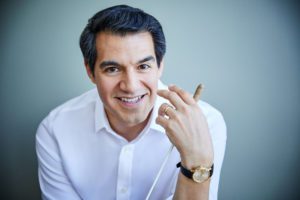
Guest conductor Miguel Harth-Bedoya boasts an impressive international career, and is currently the music director of the Fort Worth Symphony. Harth-Bedoya is also the director and founder of Caminos Del Inka, a nonprofit organization dedicated to the research, discovery, and preservation of South American music. I cannot think of a better conductor for a program of Spanish and Spanish-influenced music.
Nikolai Rimsky-Korsakov completed and premiered Capriccio espagnol in 1887, and it immediately gained favor by audiences and performers alike. Rimsky-Korsakov was inspired to write the piece by some of Glinka’s Spanish-inspired works, and also draws from his time in northwestern Spain while he served in the Russian navy. This piece was originally intended to be a violin concerto, but other solo instruments were incorporated and heavily featured in the composition.
The piece began with enthusiasm, and captured the attention of the audience from the first note. Flawless clarinet solos conversationally wove in and out of the orchestral texture, and possessed the perfect tone, character, and energy of the piece. (He even gave a well-deserved wave of his red cleaning cloth at the end of the piece, which got a nice laugh from the audience!) Each movement flowed seamlessly into the next, and conveyed every emotion and evoked every image that Rimsky-Korsakov intended. Every cadenza and solo passage from the violinist, flutist, and harpist sounded absolutely effortless and showcased the virtuosity of the performers perfectly. It truly was one of the best performances of the piece that I have ever had the pleasure of hearing, and was the perfect way to kick off the evening.
Édouard Lalo composed his Symphonie espagnole after premiering his successful Violin Concerto, and premiered it just one short year later. This piece could easily be considered a violin concerto as well, but Lalo wanted to maintain the image of the violin soloist “soaring above the orchestra” instead. Chee-Yun, the violin soloist of the evening, is a world-class performer and educator, and has performed on five continents and held faculty positions at many well-known universities. Interestingly, she also performs on a violin that was made in 1669!
While this piece is much less in-your-face and outwardly energetic as Capriccio, it still had an attitude that was conveyed by both the soloist and the orchestra. The balance between Chee-Yun and the Nashville Symphony was perfectly conversational and highlighted the proper voices and lines at all times. Chee-Yun’s virtuosity, expressivity, and musicality were truly put front and center at all times and made for a wonderful interpretation of the piece. Most
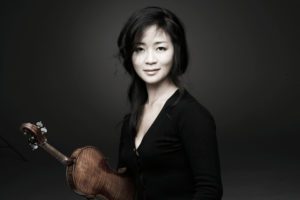
notably, the fourth movement was filled with so much emotion and lyricism, and showcased the vast stylistic range of the Nashville Symphony. In comparison to the Rimsky-Korsakov, it was a bit of gentle slide into intermission, but it was pleasant and enjoyable nonetheless.
Joaquín Turina composed Danzas fantásticas in 1919 and premiered the piece a year later in Madrid. Turina composed the piece once he returned to his home in Spain after spending time during World War I in Paris. It’s no surprise that Danzas fantásticas became his most beloved composition, as it showcases three different, yet equally exciting Spanish dances: the jota, a Basque-inspired dance, and finally a dance in the flamenco style.
No time was wasted after intermission, and the audience was brought right back in with Turina’s exciting Danzas fantásticas. While they did not begin bombastically, they started with a captivating, quiet excitement that steadily grew throughout the piece and kept the audience on the edge of their seats the entire time. The transitions between each dance were clear, but seamless and well executed, and all of the woodwind and brass features were truly extraordinary. It was also very refreshing to hear a selection by a Spanish composer, and it seemed to recapture the attention of anyone in the audience who may have wandered off a little during intermission.
Manuel de Falla composed El sombrero de tres picos (The Three-Cornered Hat) between 1916 and 1918, and premiered the full ballet in 1919. De Falla, like Turina, spent time in Paris, and was influenced by Ravel and Debussy. This work also came out of de Falla’s time in Paris and relationship with Serge Diaghilev, and was based on a novella by Pedro Antonio de Alarcon. Its story follows a miller, his wife, and their attempts to bring down the town magistrate after he attempts to seduce the miller’s wife. These three characters are represented by different instruments and themes throughout the orchestra, and in this suite, their stories are told through a series of Spanish dances, such as the jota, the fandango, and the farruca.
The suite began with an exciting trumpet and timpani duet, keeping the energy of the concert and starting the final piece of the concert strongly. In fact, the large number of brass features in the piece was a wonderful change of pace, and surely excited the low brass to have a great deal of moving parts! All of the woodwind features in the piece, particularly the English horn, were flawless as always, and really added character to the performance. Once again, the seamless transitions between movements and even suites was wonderful, and it breathed a certain life into the story of the piece. The concert concluded with a rather fast-paced but well done jota, and once again was very well-received by the audience.
All in all, it was a fantastic concert filled to the brim with energy. The masterful conducting and interpretation of Miguel Harth-Bedoya was matched by the playing of the Nashville Symphony and guest artists Chee-Yun. As always, it was pleasure to witness these musicians performing together.
Jeff “Tain” Watts Dazzles Alongside Performers at the 2019 MTSU Illinois Jacquet Jazz Festival
By Derek Volkmann
The weekend of March 16, 2019 proved to be a bustling time for the Middle Tennessee State University School of Music. The School of Music held its annual jazz festival named in honor of jazz saxophonist Jean-Baptiste “Illinois” Jacquet, one of the music’s famed “Texas Tenors” known for his work with Lionel Hampton, Cab Calloway, and Count Basie. The festival is a time when middle and high school students of jazz can participate in clinics and performances given by the School of Music jazz faculty alongside renowned artists in the field. The guest artists on Saturday were Nashville trombonist Roland Barber and internationally revered drummer Jeff “Tain” Watts. The performance Saturday featured both performers alongside the jazz faculty, college students, and high school honors students in an impressive evening of improvisation, complex ensemble writing, and musical interplay between instrumentalists of the highest caliber.

The evening opened with a video made in honor of Illinois Jacquet. Created by the Jacquet foundation, the video highlighted his career as a saxophonist and the carrying of his legacy by his family through collaborating with MTSU to hold the festival and scholarships given to college students.
After the screening of the video, MTSU’s Jazz Ensemble I filed onto the stage under the leadership of Director of Jazz Studies Jamey Simmons. The band featured three selections: “Signal Fires” by Fred Sturm, “Everyday I Have the Blues” by Aaron “Pinetop” Sparks which featured vocalist Nia Morris, and an arrangement of George Harrison’s “Here Comes the Sun” by Mike Holober. These selections demonstrated the students’ musical maturities, executing each selection with careful balancing of the various sections of instruments, navigating through complex time signature changes, authentically addressing period-specific stylistic expressions, and supporting each soloist.
After Jazz Ensemble I performed, Dr. Pamela Jacquet Davis, Illinois’ daughter and President of the foundation presented remarks with Board Member at Large John Henry regarding with the foundation’s work. They also awarded certificates to the current Illinois Jacquet Foundation scholarship recipient Gabriel Collins, a junior Jazz Studies major at MTSU, and to the members of the High School Honors Combo, who were under the direction of Assistant Director of Jazz Studies Don Aliquo. The honors combo featured a select group of students from the middle-Tennessee region recognized for their talent in jazz. The group was comprised of saxophonists Graham Broome and Jacob Kitchen, pianist Tyler Bullock, guitarist Samuel Feinstein, upright bassist Baily Johnstone, and drummer Ian Strubino as well as Collins, who collectively performed an arrangement of Wayne Shorter’s “Night Dreamer.”
A brief intermission followed the performance of the High School Honors Combo. The MTSU Faculty Jazztet, comprised of Jamey Simmons on trumpet, Don Aliquo on soprano and tenor saxophones, Matt Endahl on piano, and Jonathan Wires on upright bass filed onto the stage followed by Mr. Watts on drums. The group played four selections, all written by Watts. The first tune was “14E” after which the tune “Sebbin’” followed. The group then moved into a ballad called “412” before playing a rousing number called “Return of the Jitney Man.” Each piece showcased Watts’ incomparable ability of comping for each soloist and interaction with the other rhythm section members that went beyond conventional figures and phrases. By weaving complex polyrhythms with steady grooves, Watts was able to create tension and release that asserted himself as not merely a timekeeper but a contributor of equal interest and strength within the instrumental collective.

After the Faculty Jazztet concluded “Return of the Jitney Man,” Jazz Ensemble I made their way onto the stage accompanied by trombonist Roland Barber, a Nashville-based instrumentalist who has enjoyed performing with a diverse list of artists such as Wynton Marsalis, Chaka Khan, and the Saturday Night Live Band. Barber was the featured soloist on Watts’ piece “Jonesin’.” Barber took a motivic approach to his improvisation, gradually exploring the range capabilities of his instrument as well as increasing the rhythmic diminutions throughout each successive phrase. This piece also featured solos from selected students including pianist Ray Palousek, baritone saxophonist Kyle Etges, and trombonist David Cooper.
The second selection performed by Jazz Ensemble I with Mr. Watts featured Aliquo on tenor saxophone. This up-tempo number called “Mr. J.J.” also showcased the saxophone section of the band with Davante Buford and Gabriel Collins on tenor, Zach Tyler and PJ Scott on soprano and alto, and Kyle Etges on baritone. Each saxophonist took an extended solo before culminating in an impressive soli feature with dazzling double-time phrases.
The final selection of the evening was the classic tune “Flying Home,” a piece written by Benny Goodman, Eddie DeLange, and Lionel Hampton that made Illinois Jacquet famous due to his solo improvisation on the tune in 1942. All of the featured guests and faculty with the addition of vibraphonist Brian Mueller performed with the big band, closing the evening with rousing shout choruses, highly expressive solos, and hard-swinging grooves.
All in all, the evening which stretched from 7:30 p.m. to just shortly before 10:00 p.m. provided the audience and participants alike with inspiring performances and recognitions by all who were involved. To find out more information regarding the MTSU School of Music Jazz Artist series, visit https://www.mtsu.edu/music/jazzseries.php.
Christian McBride and Edgar Meyer Delight at the Blair School of Music
On Thursday evening, March 14, 2019, the Ingram Hall of Performing Arts at Vanderbilt University’s Blair School of Music was filled with campus students, alumni, and other members of the community eagerly awaiting the highly anticipated performance of double bassists Christian McBride and Edgar Meyer. McBride and Meyer, receivers of numerous accolades and virtuosos of their shared instrument, treated the audience on Thursday night to a program of original compositions, American songbook standards, and classical stylings of Euro-American folk music.
Thursday night’s performance given by McBride and Meyer showcased each instrumentalist’s background, strengths, and unique stylings within each piece. McBride, host of NPR’s Jazz Night in America and a six-time GRAMMY award winner brought a command of repertoire and improvisatory vocabulary rooted in the blues, bebop, and other American jazz traditions to each musical selection. Meyer, who has received high recognition in the form of the Avery Fisher Prize, a MacArthur Award, five GRAMMY awards and is currently an Artist in Residence at the Blair School of Music contributed his mastery of classical stylings and expressions within Americana to the dialogues created by McBride and himself.
Overall, McBride and Meyers explored the myriad of techniques of articulations, effects, dynamics, and phrasing unique to the double bass to create a variety of textures, grooves, and timbres in their musical conversations. Each selection featured each bassist utilizing the full means of expression on the instrument, exploring range, harmonics, percussive techniques, and both plucked and bowed deliveries of notes to showcase the double bass’ potential as both a solo and accompaniment instrument.
A total of twelve selections and one encore were performed by the duo. McBride and Meyer took a similar approach to providing pizzicato technique for accompaniment figures and arco articulations for primary melodies. This format was used for the tunes “Green Slime,” “My Funny Valentine,” “Solar,” “FRB,” Days of Wine and Roses,” “Duet No. 1”, “Tennessee Blues,” “Barnyard Disturbance,” and “All Blues.”
What was most intriguing in these selections was the syncretism of each instrumentalist’s background and training. This was especially evident in tunes such as “FRB,” a contrafact written by Meyer based on the harmonic structure of Sonny Rollins’ “Doxy,” and pieces rooted in Appalachia such as Bill Monroe’s “Tennessee Blues.” McBride utilized an approach to his improvisations that featured a heavy use of bebop vocabulary characterized by chromatic passing and lower/upper neighbor tones coupled with highly varied rhythms within the phrases. Meyer drew upon his experience in American folk traditions mostly taking diatonic approaches with heavy dosages of blues vocabulary and a liberal use of slide articulations in the melodies. Each instrumentalist communicated with phrases of varying lengths comprised of lyrical melodies in addition to fiery double-time passages showcasing their respective virtuosity.
McBride and Meyer wrote new music for this performance which was being recorded for a new release scheduled for later this year. “Duet No. 1” featured an amalgamation of time signatures, tempos, chromaticism, and melodies rooted in the blues. This piece opened with a fast figure repeated by Meyer over which McBride played the melody. This shifted into different time feels that eventually settled on a heavily swung ¾ time signature at a medium tempo. This section was utilized for soloing before returning to the opening section at the faster tempo, ending with a unison figure played in octaves by McBride and Meyer.
There were a handful of selections that saw both McBride and Meyer accompany each other on the grand piano placed at the center of the stage, most notably on pieces such as “Bewitched, Bothered, and Bewildered” by Rodgers and Hart and a tune by McBride called “Lullaby for a Ladybug.” Both instrumentalists supported each other unobtrusively, allowing the soloist full room for expression in range and dynamics on their respective musical selections.
The remaining element of Thursday night’s performance was each bassists’ unaccompanied selections. Meyer was the first to feature a solo piece that drew upon his classical training and forays into American folk music rooted in Europe. He utilized a method of improvisation featured in Celtic-derived music in which he played varying approaches to an ever-present melody. These approaches included decorations and ornamentations on the primary melody with an eventual use of double stops and pedal tones on the lower strings. In McBride’s solo selection, he began with shorter phrases peppered with harmonics before leading to more explorations of 8th-note triplet and 16th-note subdivisions framed within a contrapuntal texture. Eventually the harmonic progressions began to divulge themselves throughout the improvisation leading to a final statement of the melody to Bart Howard’s “Fly Me to the Moon.”
The final selection of the evening was a tune written by Meyer called “Barnyard Disturbance,” a piece that he remarked as “Philadelphia-meets-Oak-Ridge.” This selection utilized elements present in jazz and American folk music, juxtaposing fiddle tune figures with chromaticism and melodic language derived from blues and post-WWII jazz traditions. McBride and Meyer explored a wide range of dynamics as well as moving into a handful of tonal modulations within the piece.
After the conclusion of “Barnyard Disturbance,” the audience rewarded the performers with a standing ovation after which McBride and Meyer played an encore. The encore selection was the Miles Davis classic “All Blues,” and it featured the repeated bass figures and lyrical melodies that had characterized each selection of the evening.
Overall, the audience at the Ingram Performing Arts Center was entreated to a satisfying evening of musicality, virtuosity, and authoritative mastery by two respected and celebrated musicians representing a variety of facets within American music and culture. Readers are encouraged to explore the Blair School of Music’s schedule for more rewarding performances at blair.vanderbilt.edu. McBride’s and Meyer’s upcoming engagements can be found at christianmcbride.com and edgarmeyer.com respectively.
Nature and the Nashville Symphony

On the weekend of March 8 and 9 the Nashville Symphony offered a pastoral program featuring Tobias Picker’s The Encantadas narrated by Picker himself and Gustav Mahler’s epic masterpiece Das Lied von der Erde (The Song of the Earth). Here on the very precipice of spring, it was a beautiful concert for a rainy night in Music City.
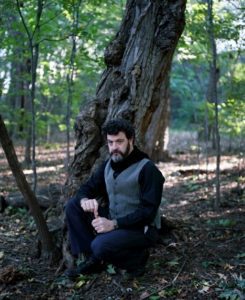
Picker, who has been cited by the Wall Street Journal as “our finest composer for the lyric stage” has a talent for dramatic depiction. The last time the Nashville Symphony performed one of Picker’s works it was his Opera without Words, which featured singing but without text, here it is the opposite, a melodrama made up of narrated text and accompanied by the orchestra. Picker drew on Herman Melville’s text for the Encantadas, which Melville wrote in 1854 while he researched for his Moby Dick in the Galápagos Islands onboard a whaling ship. Adopting Melville’s use of alliteration, Picker named his six-movement work Dream, Desolation, Delusion, Diversity, Din and Dawn respectively.
Picker’s score is dark and pensive, strikingly (neo-)romantic and beautiful but is always guided by the text. The striking entrance of the horns in the first movement, handled so well by Maestro Guerrero’s deft measure of balance and dynamic, wonderfully brought the “evilly enchanted ground” of Melville’s imagination to life. Indeed, the first movement served as a frame, describing the whole piece as a kind of memory. What followed was a string of marvelous depictions of a day in the Galápagos, from the “lashing rocks” to the “waltzing pelicans” pursuing the day, through the night and back into the dawn, with rarely a break between movements. In all, as a composition, the piece is a narration accompanied by orchestra and Guerrero never allowed the music to overwhelm Picker’s narration – a wise decision and a noted weakness of the existing recording. I am quite excited to purchase the recording being made of this performance.
One of the primary differences between Picker’s nature and Mahler’s is that Mahler’s is born of the Romantic ideal of man’s presence and part in nature itself. Whereas Picker’s narrator is an active observer of nature, Mahler’s narrator is a participant. The poet’s inner life is connected and paralleled with that of the external:
I weep often in my loneliness.
Autumn in my heart lingers too long.
Sun of love, will you no longer shine
Gently to dry up my bitter tears?
It is this perspective that provides Mahler’s piece its depth, breadth and gravitas, making this sixty-minute work seem much more than merely twice as long as Picker’s.
For the vocal parts, Nashville brought in mezzo soprano Michelle DeYoung whom we heard sing Verdi’s Requiem last season and tenor Paul Groves (replacing Anthony Dean Griffey just this past Wednesday) in the male part. Both performed quite well. Grove’s warm, clarion instrument was pushed to its ends in the first movement’s famous phrase “Dunkel ist das Leben, ist der Tod,” (Dark is life, is death) which appears a half step higher over and over again. This stress, imagined and intended my Mahler who was just coming to terms with his own mortality at the time, provided a remarkable opening movement.
Groves’ performance in the other two movements for his part, “3. Von der Jugend” and “5. Der Trunkene im Frühling” (often described as the work’s Scherzi in Mahler’s symphonic form) was equally marvelous.

Concertmaster Jun Iwasaki and Principle flutist Érik Gratton handled their solos admirably in the fifth movement drawing Mahler’s pastoral scene with a deft beauty.
However, if the male role is graced with the opening movement of the form, the female role will always win out because it is her part that brings the world that Mahler has created to an end. Indeed Mahler has built an expressive crescendo into her part. After a “somewhat dragging” (Etwas schleppend) and “weary” (Ermudet) second movement (2. Der Einsame im Herbstand” The Lonely Man in Autumn”), and the more exotic fourth (“4. Von der Schonheit” on Beauty), the finale, “6. Der Abschied” (The Farewell) brings the whole of the symphony to a formal and programmatic conclusion.
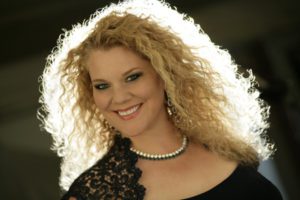
DeYoung performed with admirable precision, and great patience. In the second and fourth movements she maintained a certain amount of emotional restraint that allowed for a crescendo of feeling in the final movement. As the texture of the movement finally receded into the pedal point in the strings against Gratton’s lonely flute, DeYoung intoned the closing mantra “ewig” (forever) and it seemed as if the air had been simply pulled from the room. When the Maestro lowered his shoulders, I counted a good 90 seconds before the first wave of their earned standing ovation.
The Classical Series at the Nashville Symphony continues on the 21st with “Spanish Nights” featuring Peruvian conductor Miguel Harth-Bedoya



